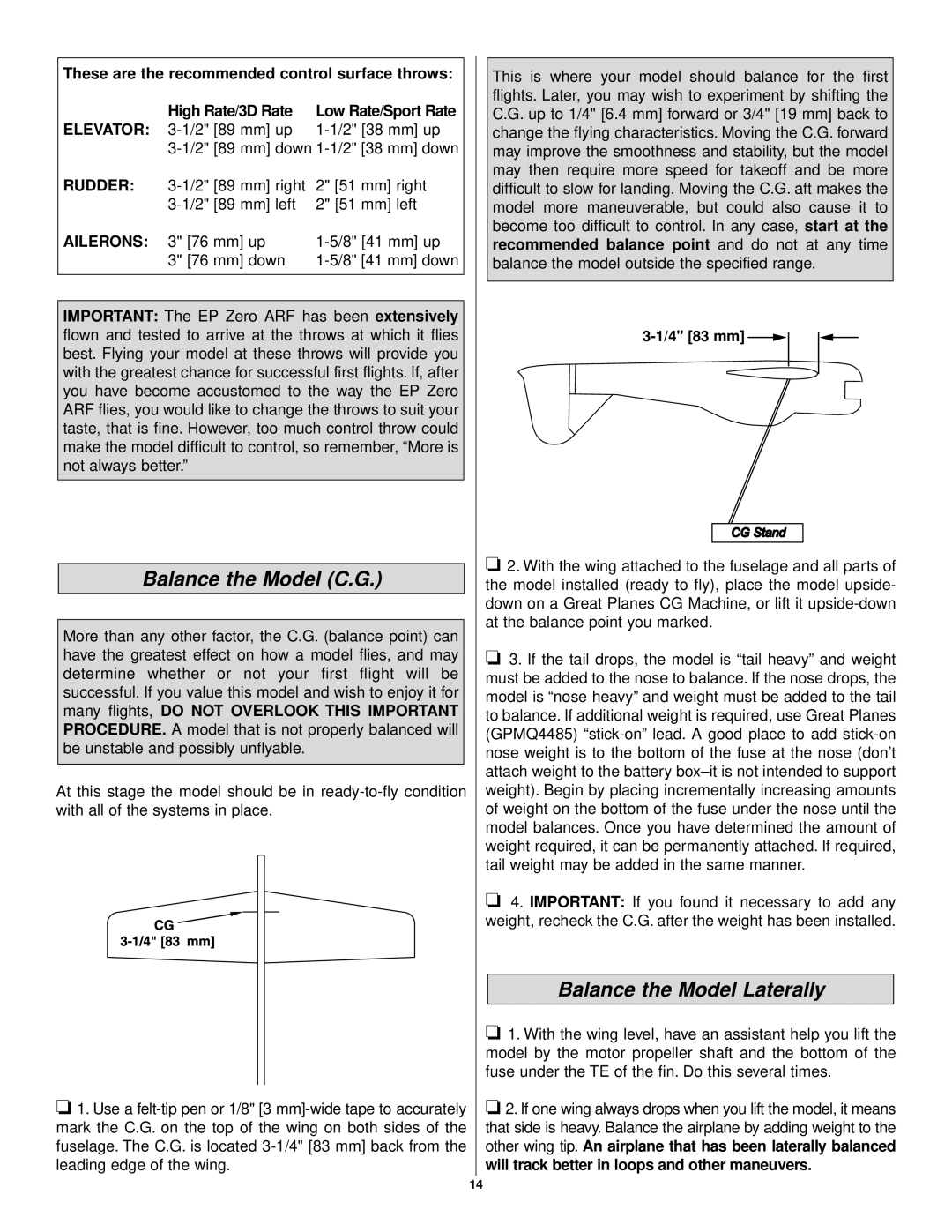
These are the recommended control surface throws:
| High Rate/3D Rate | Low Rate/Sport Rate |
ELEVATOR: | ||
| ||
RUDDER: | 2" [51 mm] right | |
| 2" [51 mm] left | |
AILERONS: | 3" [76 mm] up | |
| 3" [76 mm] down | |
IMPORTANT: The EP Zero ARF has been extensively flown and tested to arrive at the throws at which it flies best. Flying your model at these throws will provide you with the greatest chance for successful first flights. If, after you have become accustomed to the way the EP Zero ARF flies, you would like to change the throws to suit your taste, that is fine. However, too much control throw could make the model difficult to control, so remember, “More is not always better.”
Balance the Model (C.G.)
More than any other factor, the C.G. (balance point) can have the greatest effect on how a model flies, and may determine whether or not your first flight will be successful. If you value this model and wish to enjoy it for many flights, DO NOT OVERLOOK THIS IMPORTANT PROCEDURE. A model that is not properly balanced will be unstable and possibly unflyable.
At this stage the model should be in
❏1. Use a
This is where your model should balance for the first flights. Later, you may wish to experiment by shifting the C.G. up to 1/4" [6.4 mm] forward or 3/4" [19 mm] back to change the flying characteristics. Moving the C.G. forward may improve the smoothness and stability, but the model may then require more speed for takeoff and be more difficult to slow for landing. Moving the C.G. aft makes the model more maneuverable, but could also cause it to become too difficult to control. In any case, start at the recommended balance point and do not at any time balance the model outside the specified range.
3-1/4" [83 mm] 

❏2. With the wing attached to the fuselage and all parts of the model installed (ready to fly), place the model upside- down on a Great Planes CG Machine, or lift it
❏3. If the tail drops, the model is “tail heavy” and weight must be added to the nose to balance. If the nose drops, the model is “nose heavy” and weight must be added to the tail to balance. If additional weight is required, use Great Planes (GPMQ4485)
❏4. IMPORTANT: If you found it necessary to add any weight, recheck the C.G. after the weight has been installed.
Balance the Model Laterally
❏1. With the wing level, have an assistant help you lift the model by the motor propeller shaft and the bottom of the fuse under the TE of the fin. Do this several times.
❏2. If one wing always drops when you lift the model, it means that side is heavy. Balance the airplane by adding weight to the other wing tip. An airplane that has been laterally balanced will track better in loops and other maneuvers.
14
